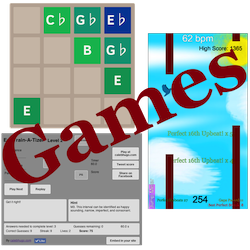All too often I hear drum set players use a simple rock beat for hymns. I would challenge drummers to think a little more creatively and improvise a part that is more stylistically appropiate. Someday I plan to upload some recordings of myself improvising to these old songs but for now, here is a place to start:
- Try playing the melody on the drums. The drum you use should not be based on pitch, but rather on where the note is in the measure. Almost like you’re letting the melody influence that rock beat you’ve already been doing.
- Listen to the pianist and imitate. Usually, the pianist will drive these traditional songs. Get ideas from there. If there is no pianist at your church, get with one from outside your church and jam for a while.
- Play something different for every verse and make it match the lyrics. “Up from the grave he arose with a mighty triumph o’re his foes!” There are about 50 good things to do right there. A simple rock beat is not one of them.
- Emphasize beats 1 and 3 when in 4/4. This style comes from a classical tradition and you should not be emphasizing 2 and 4 like you normally would. However, do NOT put the snare on 1 and 3 to do this…that just sounds bad. Be creative, you’ll get it.
That’s all for now. I’ll be sharing more on this topic soon.



